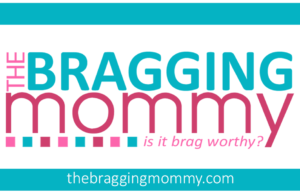It can be disheartening when your little one cries at the thought of going to the dentist. Dental care is vital for our kids; early habits really do set the stage for a lifetime of healthy smiles. So, how do we make those trips less of a battle?

Modern dentistry is constantly evolving, embracing technology that makes the whole experience more comfortable and efficient. For example, many practices are now using Intraoral Scanners to create digital impressions, eliminating the need for messy molds and reducing the overall time spent in the chair. Ask your dentist if they use this technology; it could make a world of difference for your child’s comfort level. Let’s dive into additional tips to make dental visits not just stress-free but genuinely positive for your kiddos.
Start Early: Laying the Foundation for Good Oral Habits
Introducing dental care early is key. Really key. The earlier you start, the better. Getting your child used to the dentist early, ideally around their first birthday or when their first tooth pops up, can do wonders to calm their nerves. I get it, first birthday and dentist? But this isn’t about intense procedures; it’s about them getting used to the dental environment. These early, positive experiences lay the groundwork for a lifetime of good oral health.
Early exposure helps normalize the dentist’s office. It allows your child to become familiar with the sights, sounds, and smells, reducing the fear of the unknown. These initial visits can be short and simple, focusing on building trust and rapport.
Choose the Right Dentist for Your Child
Not all dentists are created equal, and that’s especially true when it comes to little ones. Pediatric dentists have specialized training in working with children and creating a kid-friendly environment, which can significantly reduce anxiety. That can mean a waiting room that’s less sterile and more… well, less sterile! Think bright colors, fun decorations, maybe even some toys and games. The staff approach is also important. They should be patient, kind, and able to communicate with kids on their level. Read reviews, ask friends, and even visit the office beforehand to see if it’s a good fit for your family. The right dentist really can make all the difference.
A good pediatric dentist will use child-friendly language, explain procedures in simple terms, and offer distractions like videos or music during treatment. This approach can help alleviate anxiety and make the experience more pleasant for your child.
Make Brushing and Flossing a Fun(ish) Daily Routine
Let’s face it, brushing and flossing can be a chore, even for adults. For kids? Torture, basically. But with a little creativity, you can turn it into a less painful daily routine. First, let your kids pick out their own toothbrushes and toothpaste. Fun characters, yummy flavors (but not too yummy; we don’t want them eating it!), are a great way to get them excited. Also, use brushing apps or YouTube songs to make it interactive. Seriously, there are tons of options out there. Consider reward charts or sticker incentives. A little motivation goes a long way. Excitement about daily dental care at home can translate to less anxiety when they actually go to the dentist.
Transforming brushing into a game can make it more enjoyable for children. Consider setting a timer and challenging them to brush for the recommended two minutes. Make it a family affair by brushing together and showing them you value oral hygiene, too.
Role-Playing the Dental Visit at Home
Pretend play can really take the edge off the fear. Use stuffed animals or dolls to practice “check-ups”. You can count their teeth, pretend to clean them, and generally get them familiar with the process. Demonstrate tools like a mirror and counting teeth to mimic a real appointment. This helps demystify what happens at the dentist and makes it seem less scary.
Creating a comfortable and familiar environment can help your child feel more at ease during their actual dental visit. Incorporate positive language and praise during pretend play to associate dental care with positive experiences.
Read Books and Watch Videos About Visiting the Dentist
Storytelling is powerful, and there are some amazing children’s books out there that normalize dental visits. Books like “The Berenstain Bears Visit the Dentist” or “Peppa Pig at the Dentist” can show kids that going to the dentist is a normal and even positive experience. Age-appropriate animated shows or videos can also make dental visits seem less intimidating.
Visual aids can reinforce the idea that dental visits are safe and beneficial. Choose books and videos that depict dental check-ups as routine and positive experiences, highlighting the importance of oral health.
Use Positive Language and Avoid Scary Words
The words you use really matter! Avoid words like “pain,” “drill,” or “shot,” and instead use phrases like “tooth spa” or “tooth counting.” Promote a lighthearted, reassuring approach to discussing dental care. Instead of saying, “the dentist is going to poke your teeth,” say, “the dentist is going to count your teeth and make sure they are strong and healthy!”
Reframing dental procedures in a positive light can help reduce anxiety and fear. Focus on the benefits of dental care, such as preventing cavities and keeping teeth healthy, rather than dwelling on potential discomfort.
Plan a Fun Reward or Post-Visit Treat
Small rewards can create positive associations with dental visits. I am not talking about a huge gift every time they go to the dentist, but sometimes, a little motivation helps! This could be extra playtime, a visit to the park, or a small treat. Just avoid sugary treats. You could always do a small toy, a new book, or a special activity they enjoy.
Rewarding your child after a dental visit can reinforce positive behavior and make them feel proud of their accomplishment. Choose rewards that promote healthy habits and avoid sugary treats that can compromise their oral health.
Stay Calm and Supportive if Your Child Feels Anxious
Even with all the preparation in the world, your child might still feel anxious, and that’s okay. Deep breaths. This happens. Teach them simple breathing exercises or calming techniques they can use during the visit. A comfort item, like a stuffed toy or blanket, can also provide a sense of security. It’s also super important for YOU to lead by example, showing that dental care is routine and not scary.
Your calmness and reassurance can have a significant impact on your child’s anxiety levels. Stay positive, offer encouragement, and validate their feelings. Let them know that you understand their fears and that you’re there to support them.
Tips for Stress-Free Dentist Visits
- Choose a Pediatric Dentist: Pediatric dentists are trained to work with children and create a comfortable environment, which can significantly reduce anxiety.
- Start Early: Introduce your child to the dentist early, ideally by their first birthday or when their first tooth appears. This helps them become familiar with the dental environment.
- Positive Language and Role-Playing: Use positive language to describe dental visits and engage in role-playing at home to help your child feel more comfortable with the idea of a dental check-up.
- Visit the Office Before the Appointment: Arrange a pre-visit to the dental office to let your child meet the staff and explore the surroundings, reducing anxiety on the day of the appointment.
- Bring Comfort Items: Bring a favorite toy or blanket to provide comfort during the visit.
- Positive Reinforcement: Offer rewards or praise after the visit to make it a positive experience.
DIY Dental Activities & Tooth Decay Experiments
Adding some hands-on activities to help drive those oral health lessons home is useful. A brilliant little activity that is both entertaining and educational involves demonstrating the effects of sugar on teeth using hard-boiled eggs and soda. Simply submerge a hard-boiled egg in soda and observe over several days how the eggshell stains and degrades, which very much mimics what can happen to tooth enamel when exposed to sugary drinks.
Another idea is to create a DIY model mouth and teeth using construction paper and clay. This hands-on project assists in teaching dental anatomy, and further, it allows you to demonstrate proper brushing techniques.
Here’s a few more amazing ideas:
- Tooth Brushing Chart Challenge: Create a chart to track brushing habits and offer rewards for consistency. Instead of just stickers, maybe offer extra screen time (in moderation, of course!).
- Flossing with Playdough and Lego Bricks: Use playdough and Lego bricks to demonstrate flossing. It’s way more engaging than just telling them to floss!
- Pretend Dentist Play: Role-play dentist visits with toys to familiarize kids with dental procedures.
- Tooth Fairy Treasure Hunt: Organize a treasure hunt with clues leading to dental care items.
- Dental Hygiene Pictionary: Draw dental-related words to make learning fun.
- Toothbrush Obstacle Course: Set up an obstacle course to make brushing an adventure.
- Plaque Disclosing Tablets: Use tablets to show areas where plaque remains after brushing.
- Storytime with Tooth-friendly Tales: Read stories about dental health to engage kids.
By incorporating these tips and activities, you can make dental care enjoyable for kids and ensure less-stressful dentist visits.
Conclusion
So there you have it. Start early, find the right dentist, prepare beforehand, and use positive reinforcement. By implementing these strategies, you can turn dental visits into a smoother experience for your kids. While tears might still happen sometimes, hopefully, these tips will help make them fewer and further between.



